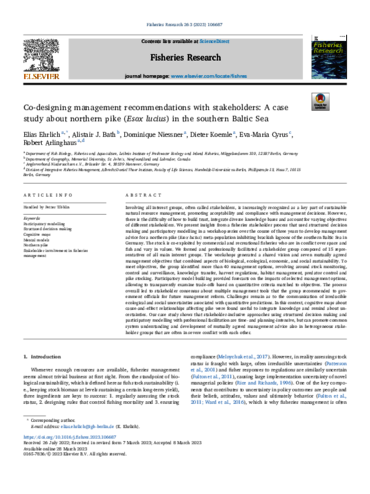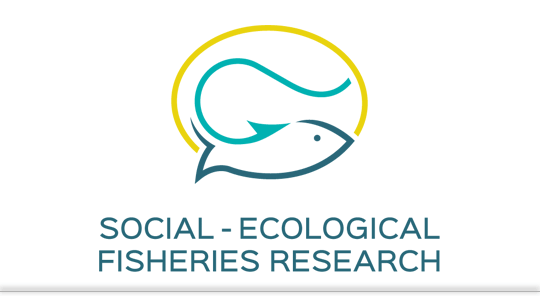Involving all interest groups, often called stakeholders, is increasingly recognized as a key part of sustainable natural resource management, promoting acceptability and compliance with management decisions. However, there is the difficulty of how to build trust, integrate diverse knowledge bases and account for varying objectives of different stakeholders. We present insights from a fisheries stakeholder process that used structured decision making and participatory modelling in a workshop series over the course of three years to develop management advice for a northern pike (Esox lucius) meta-population inhibiting brackish lagoons of the southern Baltic Sea in Germany. The stock is co-exploited by commercial and recreational fisheries who are in conflict over space and fish and vary in values. We formed and professionally facilitated a stakeholder group composed of 15 representatives of all main interest groups. The workshops generated a shared vision and seven mutually agreed management objectives that combined aspects of biological, ecological, economic, and social sustainability. To meet objectives, the group identified more than 40 management options, revolving around stock monitoring, control and surveillance, knowledge transfer, harvest regulations, habitat management, predator control and pike stocking. Participatory model building provided forecasts on the impacts of selected management options, allowing to transparently examine trade-offs based on quantitative criteria matched to objectives. The process overall led to stakeholder consensus about multiple management tools that the group recommended to government officials for future management reform. Challenges remain as to the communication of irreducible ecological and social uncertainties associated with quantitative predictions. In this context, cognitive maps about cause-and-effect relationships affecting pike were found useful to integrate knowledge and remind about uncertainties. Our case study shows that stakeholder-inclusive approaches using structured decision making and participatory modelling with professional facilitation are time- and planning-intensive, but can promote common system understanding and development of mutually agreed management advice also in heterogeneous stakeholder groups that are often in severe conflict with each other.
Co-designing management recommendations with stakeholders: A case study about northern pike (Esox lucius) in the southern Baltic Sea
Project Boddenpike , Peer-reviewed

Ehrlich, E., Bath, A. J., Niessner, D., Koemle, D., Cyrus. E. M., Arlinghaus, R. 2023. Co-designing management recommendations with stakeholders: A case study about northern pike (Esox lucius) in the southern Baltic Sea. Fisheries Research, 263, 106687.
Published
: 2023
Appeared in
: Fisheries Research, 263, 106687
